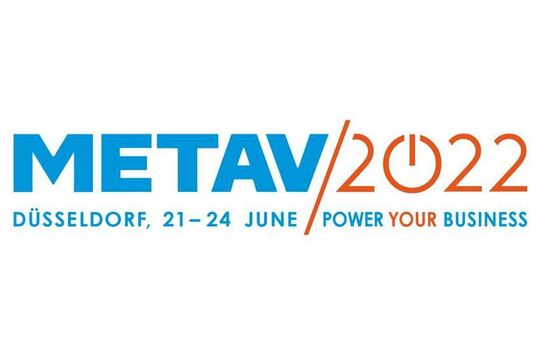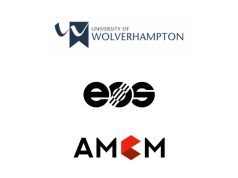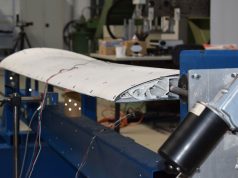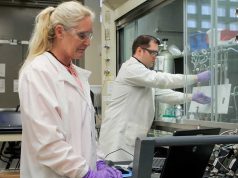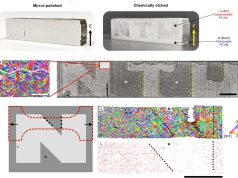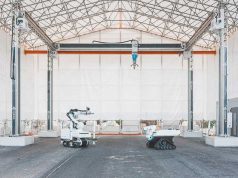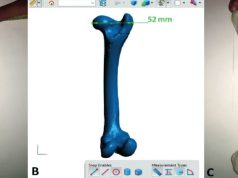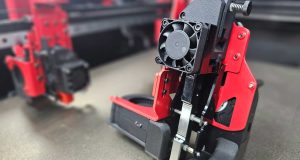An international network is researching new processes for additively manufactured parts in the EU’s ‘Ad-Proc-Add’ (Advanced Processing of Additively Manufactured Parts) project. One of the key issues within the production chain of additively manufactured metal materials is the interaction with post-processing machining.
The project was launched in 2019 and is spearheaded by the Stuttgart Institute for Machine Tools (IfW). Its visionary goal was to influence workpiece properties by adapting ASM process chains. This would allow the workpieces to meet strict engineering specifications and thus be used in toolmaking, for example. Prof. Hans-Christian Möhring, Director of the IfW, reports on how this was achieved. Current additive manufacturing applications will be on show at METAV 2022, which will be held in Düsseldorf from June 21 to 24.
Additive-subtractive manufacturing processes – ASM for short. It sounds a bit like school arithmetic.
However, ASM is actually “the comprehensive combination of additive component generation with subtractive (i.e. material-removing) post-processing,” says Möhring, who initiated the EU Ad-Proc-Add project and has joined forces with leading academics in production research within the WGP (German Academic Association for Production Technology).
The whole topic is exciting because of the wide range of possible materials, of additive manufacturing processes and of different influences on components.
3D printing almost always requires post-processing
The Stuttgart researchers take a special approach to 3D printing. For Möhring, its special appeal lies in the fact that it opens the way for new design solutions, such as the integration of functions that cannot be achieved using conventional manufacturing processes. For more than three years, the IfW has therefore been working on the 3D printing of components made of different materials. But the process is also interesting from a machining perspective because well over 90 percent of additively manufactured components require post-processing, according to the IfW. For example, they must meet exacting tolerance requirements before being assembled or installed.
“So when we refer to additive component manufacturing, in most cases we’re talking about an additive-subtractive process chain,” says Möhring.
3D printing processes have to be optimized so that additively processed materials can be re-machined, and machining processes have to be adapted to the requirements of additively manufactured components. To complicate matters further, machining also changes the properties of both the material and the component.
First the strategic questions
This makes it important to determine how the component properties of tools, for example, can be adjusted technologically so that they meet even the strictest of requirements despite the use of two different manufacturing processes? For Möhring, a number of strategic questions need to be answered before taking the first step, 3D printing. How do I arrange the components to be printed in the working area of the additive system? What support structures should I use to build the part effectively during the 3D printing process?
The production engineer reminds potential users that support structures also constitute thermal bridges that affect the overall thermal environment.
“After all, this actually influences the process parameters,” Möhring emphasizes. “Which material web strategy should I use for application? How much energy should I use in converting the additive process? At what rate should I apply the material?”
It is important to consider all these parameters, he says, because they affect the microstructure and grain density. And the microstructure setting in turn determines which residual stresses are introduced to the component – which can have a major impact later on in the process chain. In the worst case, cracks can even form.
Targeted exploitation of interactions
But those who know how to influence such properties are able to produce components with in some cases surprising properties.
“We deliberately printed highly porous elements,” Möhring reports. “In fact, porous materials are particularly suitable for support structures that have to be removed after the layering. These are examples of useful interactions.”
However, interesting interactions also result from the design of the additive process. This design determines the initial conditions of the subsequent metal post-processing.
“Depending on the microstructure of the additively manufactured component, the machining process interacts with it at the thermomechanical level. A further new microstructure then arises in the edge zones of the component,” reports the Stuttgart researcher. “All of these relationships needed to be investigated in order for us to understand and describe them.”
The component properties can then be influenced more effectively than before with this new understanding of the interactions in the ASM process.
Quality assurance: Machining as reference
Methods for process monitoring and quality inspection were also developed in the project. The aim here was to make optimum use of the synergies with, and capacities of, the project partners. Möhring is not yet divulging any details, but has made some interesting allusions. He believes that measurement technology for machining processes provides a useful reference here. The additive process needs to be monitored and analyzed just as closely. He regards methods for analyzing the considerable residual stress in components as important, too.
However, the project team is not only working on laboratory-based measurement systems.
Möhring: “We also want to integrate measurement systems into machine and plant technology or into construction platforms in order to observe the actual 3D printing of the component and the physical effects that occur.”
This is where digital tools come into play. These include everything from digital process monitoring and control, artificial intelligence and machine learning through to physics-based analytical models, simulations and digital twins.
Practical know-how at METAV
For Möhring, even more important than experience with digital tools is the expert knowledge that is acquired in the projects:
“This allows us to support all those involved in the ASM process chain – everyone from machine and plant manufacturers through to end users.“
A digital compendium of the project results will be useful for design and production engineers as well as service staff. However, Möhring is having to put off interested parties until later in 2022, “… because we are still collecting the results”. Further applications related to additive manufacturing will be on show at METAV 2022, which will be held in Düsseldorf from June 21 to 24. This will include a dedicated Additive Manufacturing Area which will give visitors an opportunity to engage in intensive discussions with experts from the field
Detailed information, offers and registration documents for METAV 2022 are available at www.metav.de.
Subscribe to our Newsletter
3DPResso is a weekly newsletter that links to the most exciting global stories from the 3D printing and additive manufacturing industry.



